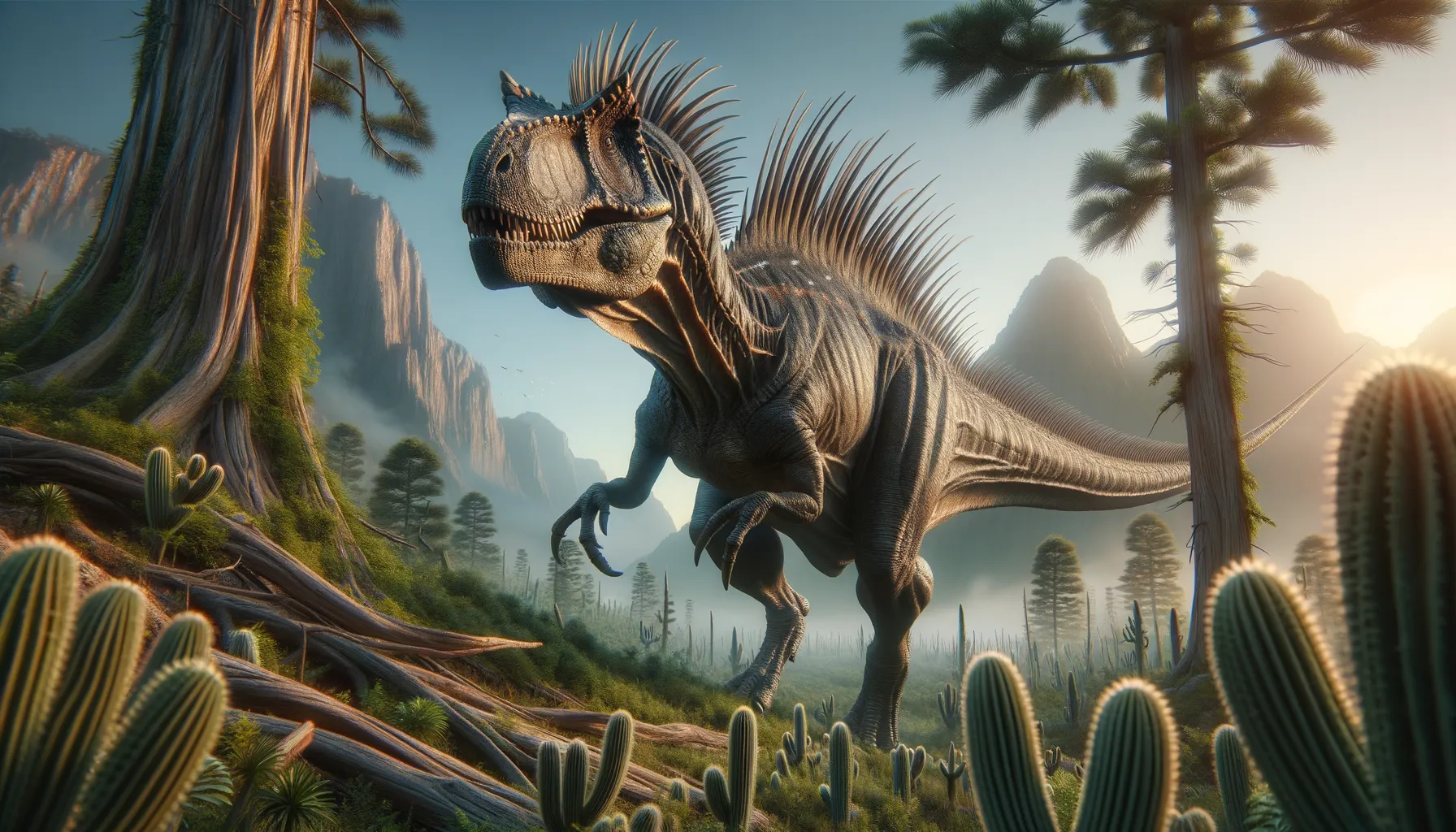
Acrocanthosaurus
The high-spined hunter of ancient times.
Period
Cretaceous
Length
Around 38 feet long.
Height
Approximately 12 feet tall.
Weight
Up to 6 tons.
Acrocanthosaurus was a large, carnivorous dinosaur that roamed North America during the early Cretaceous period. Notable for the tall spines along its back, it was a formidable predator with a powerful build. This dinosaur played a key role in its ecosystem, hunting large herbivorous dinosaurs. Its fossils provide important insights into the diversity and evolution of Cretaceous predators.
Diet
As a carnivore, Acrocanthosaurus primarily fed on large herbivorous dinosaurs. It likely took advantage of its size and strength to take down prey, using its teeth and claws effectively. Fossil evidence suggests it was an apex predator in its environment.
Hunting
Acrocanthosaurus may have hunted alone or in pairs, using its impressive height and speed to ambush prey. It likely relied on surprise and power to disable its targets quickly. Its strong jaws and sharp teeth were well-suited for gripping and tearing flesh.
Environmental challenges
Acrocanthosaurus faced various environmental challenges, including competition with other large predators for food. Climate changes and shifts in vegetation could also have impacted its prey availability. Human activity has only unearthed fragmented fossils, indicating the difficulties in reconstructing its full living landscape.
Speed
Moderate speed for a large predator.
Lifespan
Estimated to be around 30 years.
First discovery
Discovered in the early 1950s in Oklahoma, USA.
Fun Facts
- Acrocanthosaurus was a large theropod dinosaur that lived during the Early Cretaceous period, about 125 to 100 million years ago.
- The name Acrocanthosaurus means 'high-spined lizard,' which refers to the distinctive tall spines on its back.
- It was one of the top predators in its ecosystem, likely hunting large herbivorous dinosaurs.
- Acrocanthosaurus was about 38 feet long, making it one of the largest theropods of its time.
- Fossils of Acrocanthosaurus have primarily been found in the southern United States, particularly in Texas and Oklahoma.
- It had a strong tail, powerful legs, and sharp teeth, perfectly adapted for chasing down prey.
- The tall spines on its back may have supported a sail or hump, which could have been used for display or regulating body temperature.
Growth and Development
Acrocanthosaurus likely experienced rapid growth during its early years to reduce vulnerability to predators. Juveniles were probably more agile and faster to escape danger. As it matured, it developed strong muscles and bones, allowing it to effectively hunt large prey and navigate its environment.
Habitat
The Acrocanthosaurus lived in what is now North America, with its range likely covering a variety of habitats. These could include floodplains and forested areas with abundant vegetation supporting rich biodiversity. It thrived in regions that provided ample food resources and appropriate conditions for ambush hunting.
Interaction with other species
Acrocanthosaurus likely interacted with various herbivorous dinosaurs as prey, possibly targeting weaker or injured individuals. It may have faced competition from other large theropods. Instances of scavenging are possible, with evidence from its teeth markings on bones suggesting interactions with existing and deceased prey.
Natural lifespan
Acrocanthosaurus may have lived for about three decades in the wild.
Reproduction
Acrocanthosaurus likely laid eggs, as with most dinosaurs, in secluded nests on the ground. Females might have provided some level of care or protection to the nests to ensure offspring survival. Hatchlings were probably independent after a short period, growing quickly to increase survival chances.
Social behaviour
Acrocanthosaurus might have been a solitary hunter, though some evidence suggests potential for transient social structures during hunting. Territorial behavior would have been common, with individuals marking their range to deter rivals. Communication methods could have included vocalizations or visual displays to warn or challenge other dinosaurs.
Fossil locations
Fossils of Acrocanthosaurus have been primarily found in the Southern United States, notably in Oklahoma and Texas. Additional fossil remains have been scattered across other parts of North America. These discoveries provide crucial insights into its existence, helping scientists understand its living conditions and prevalence across the region.
